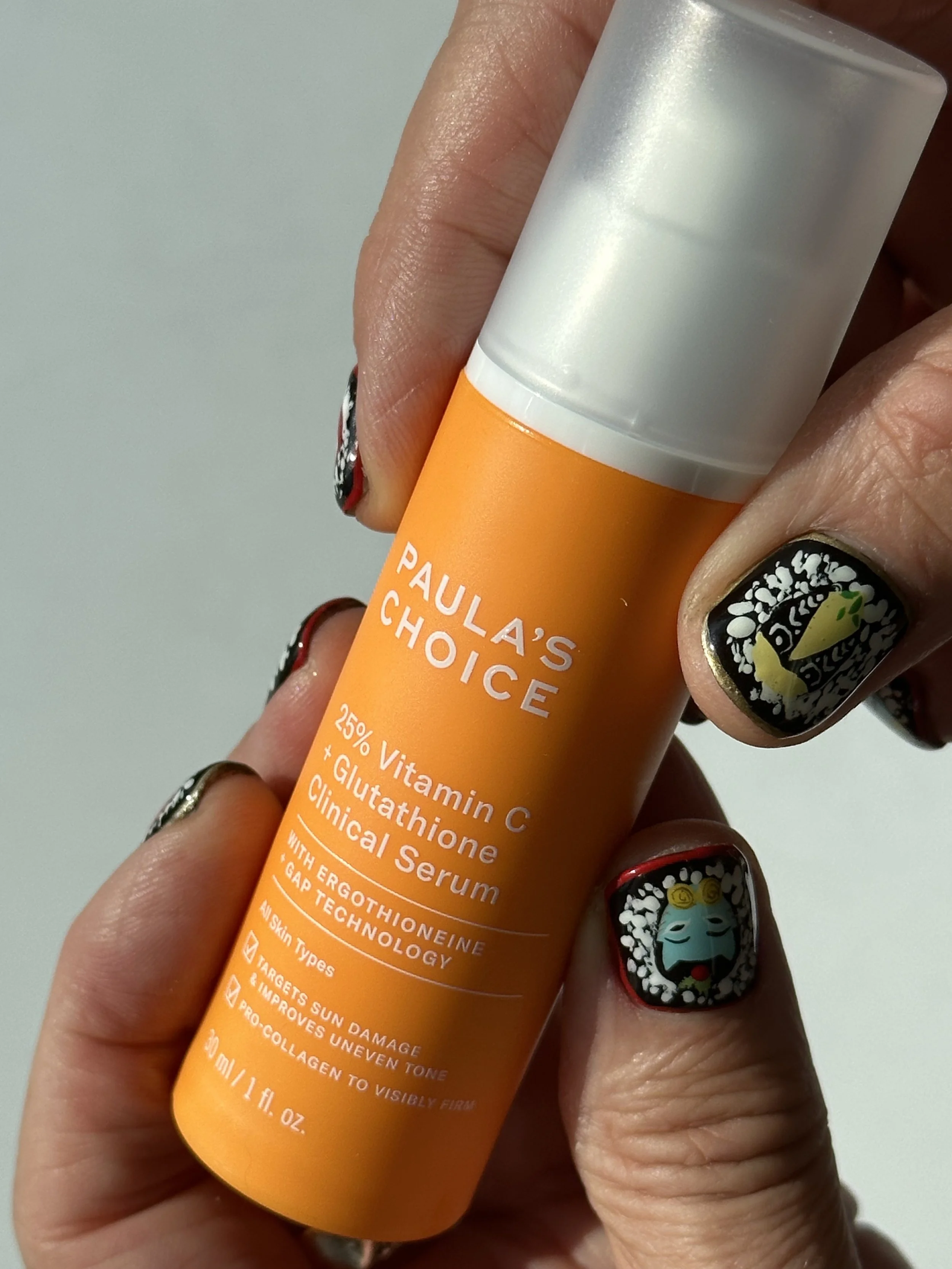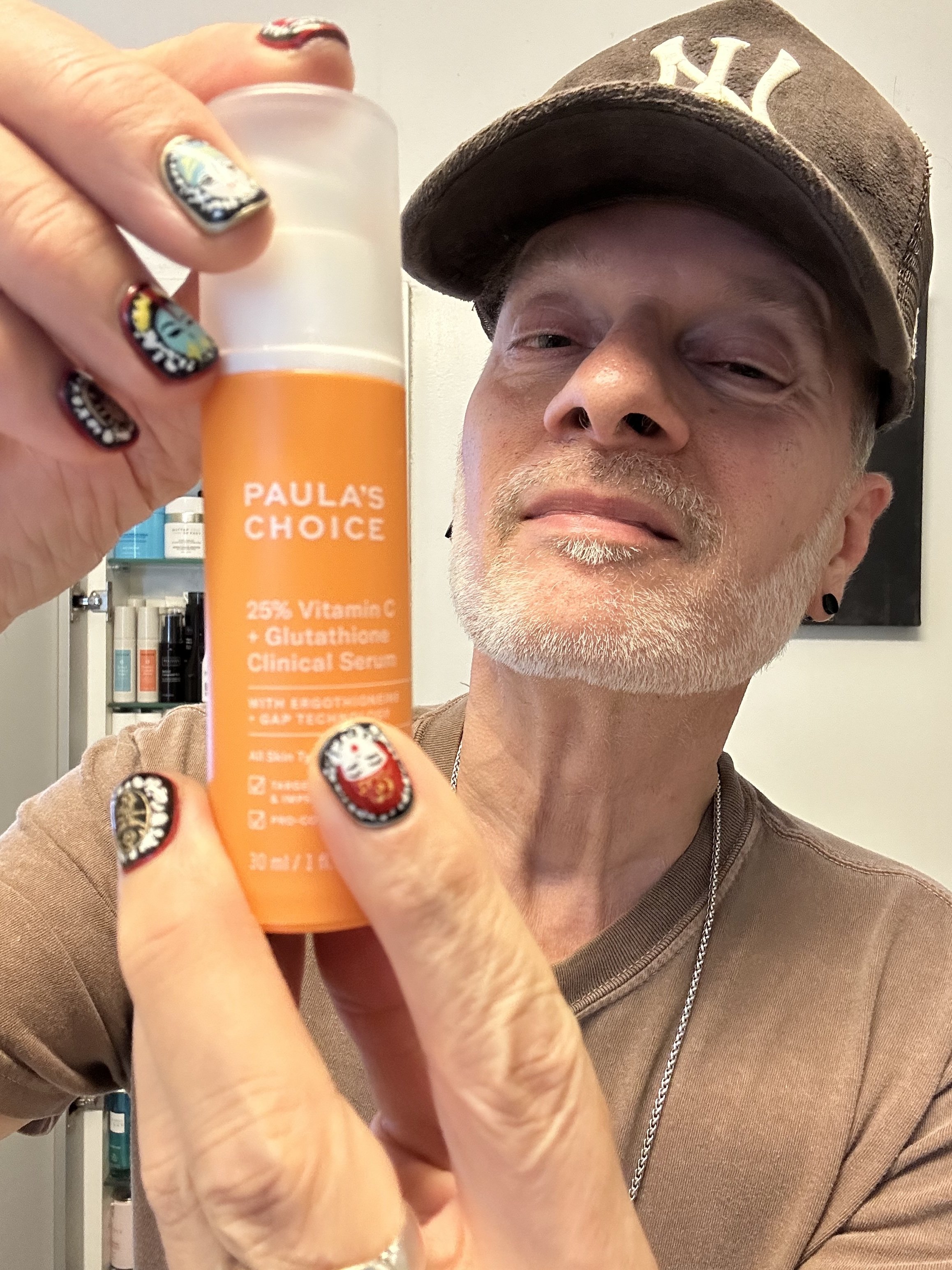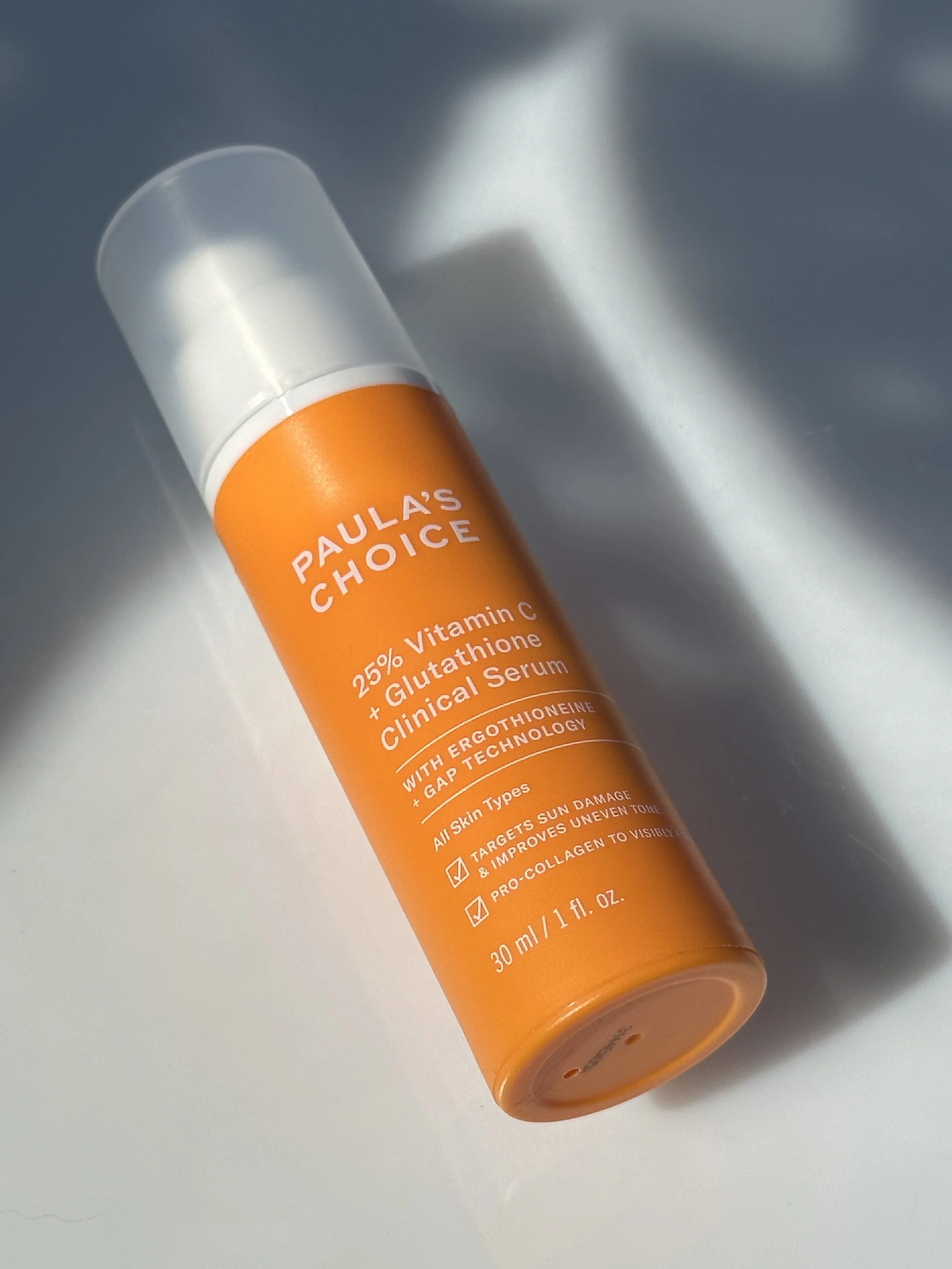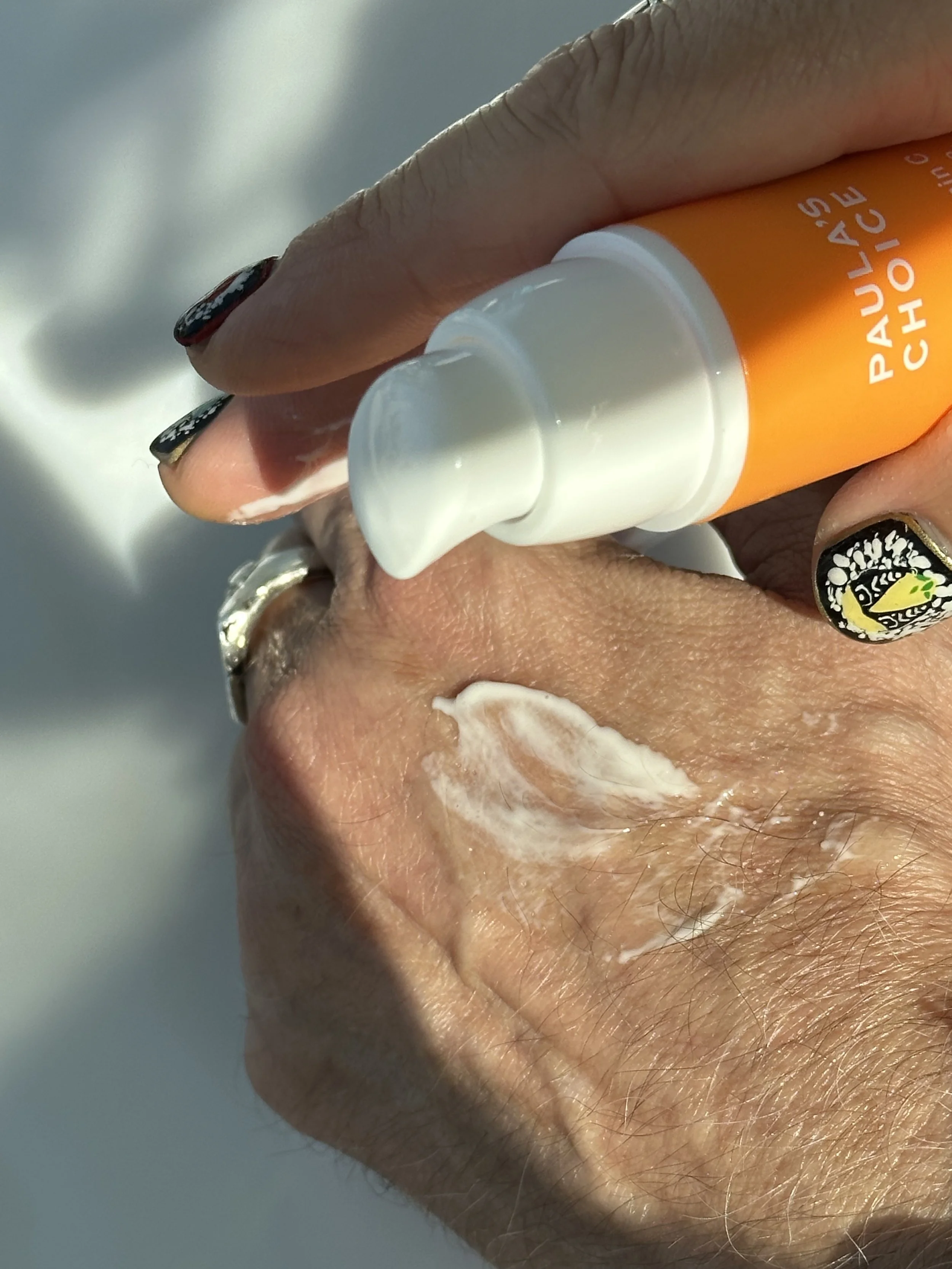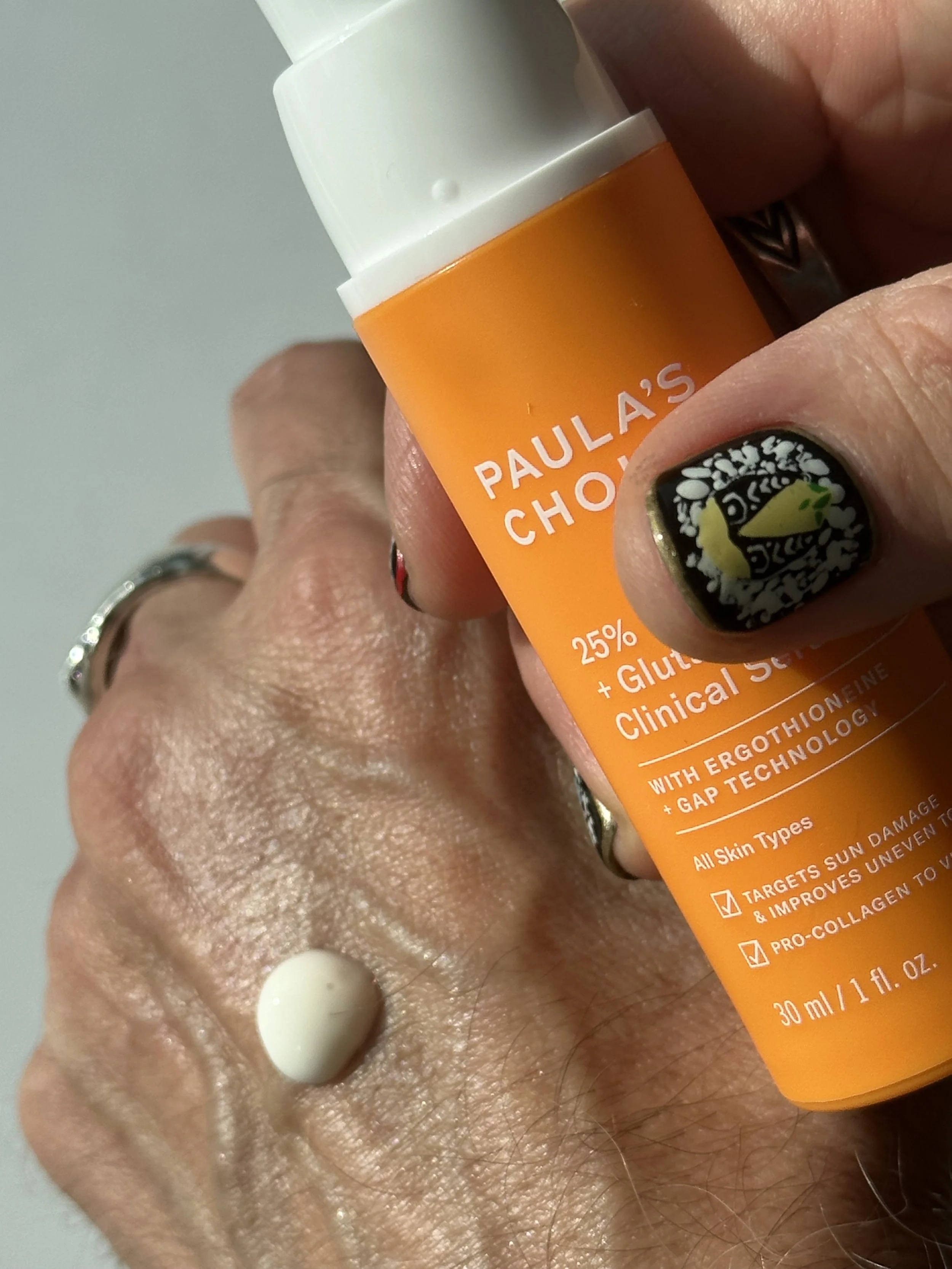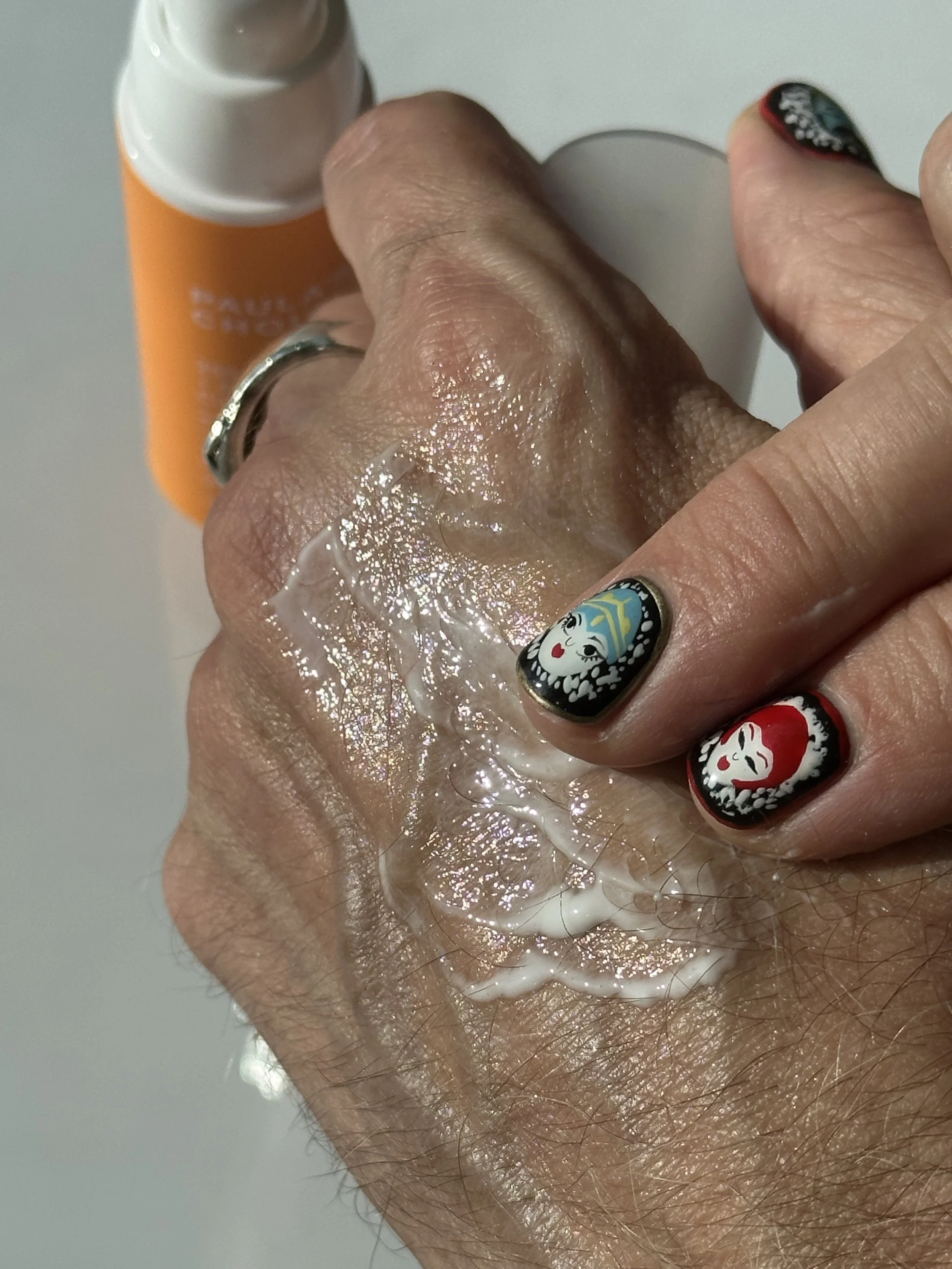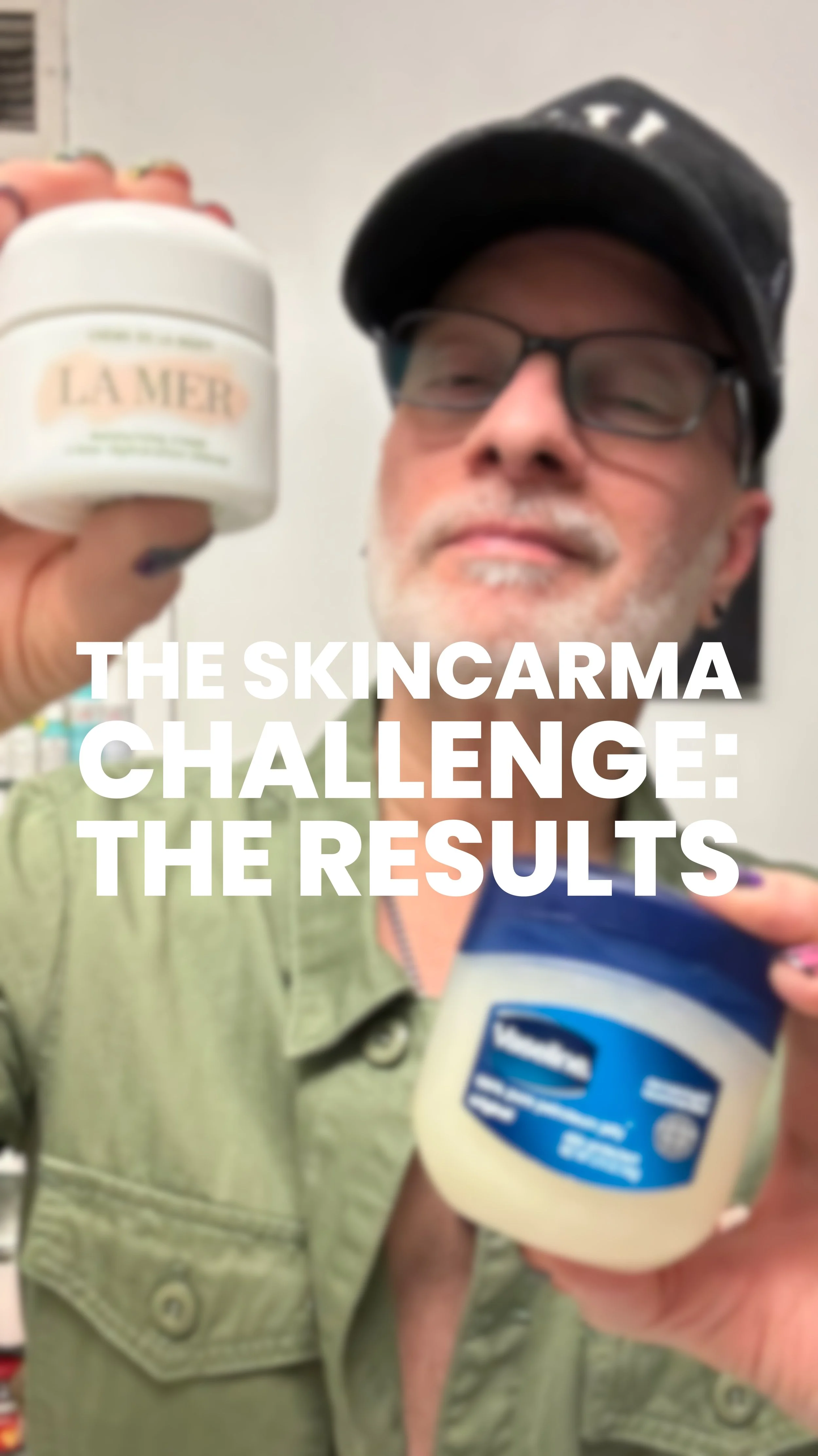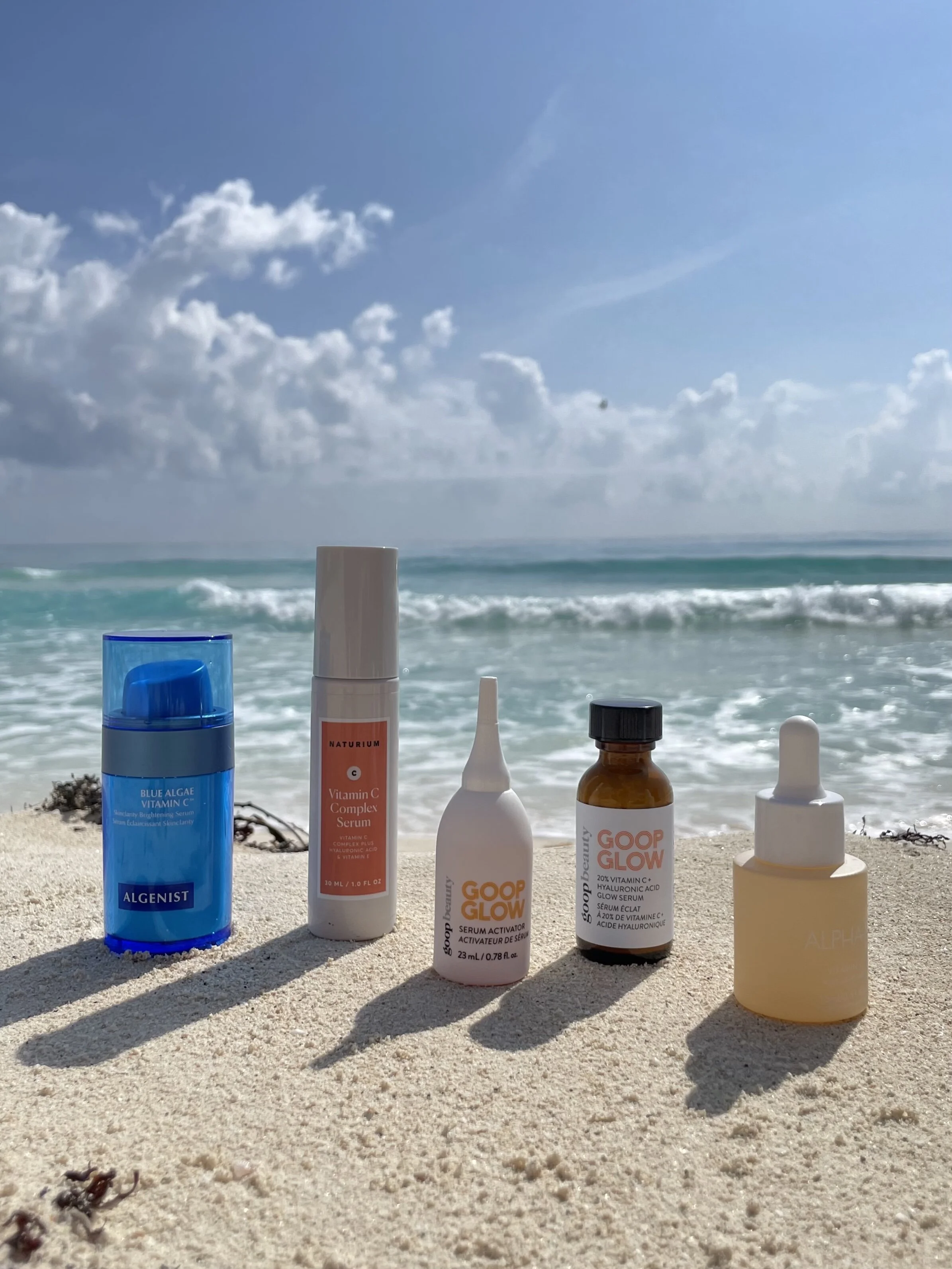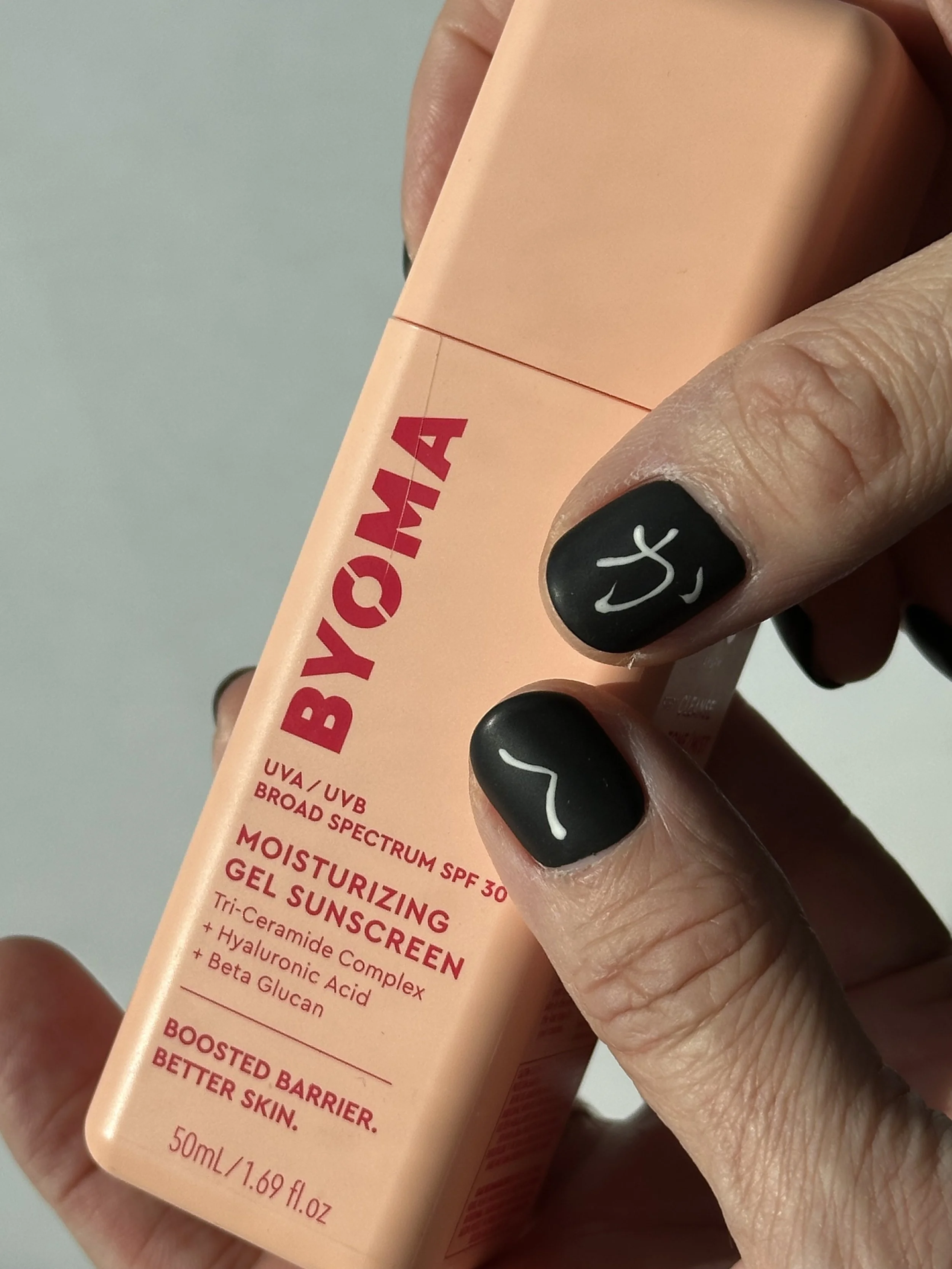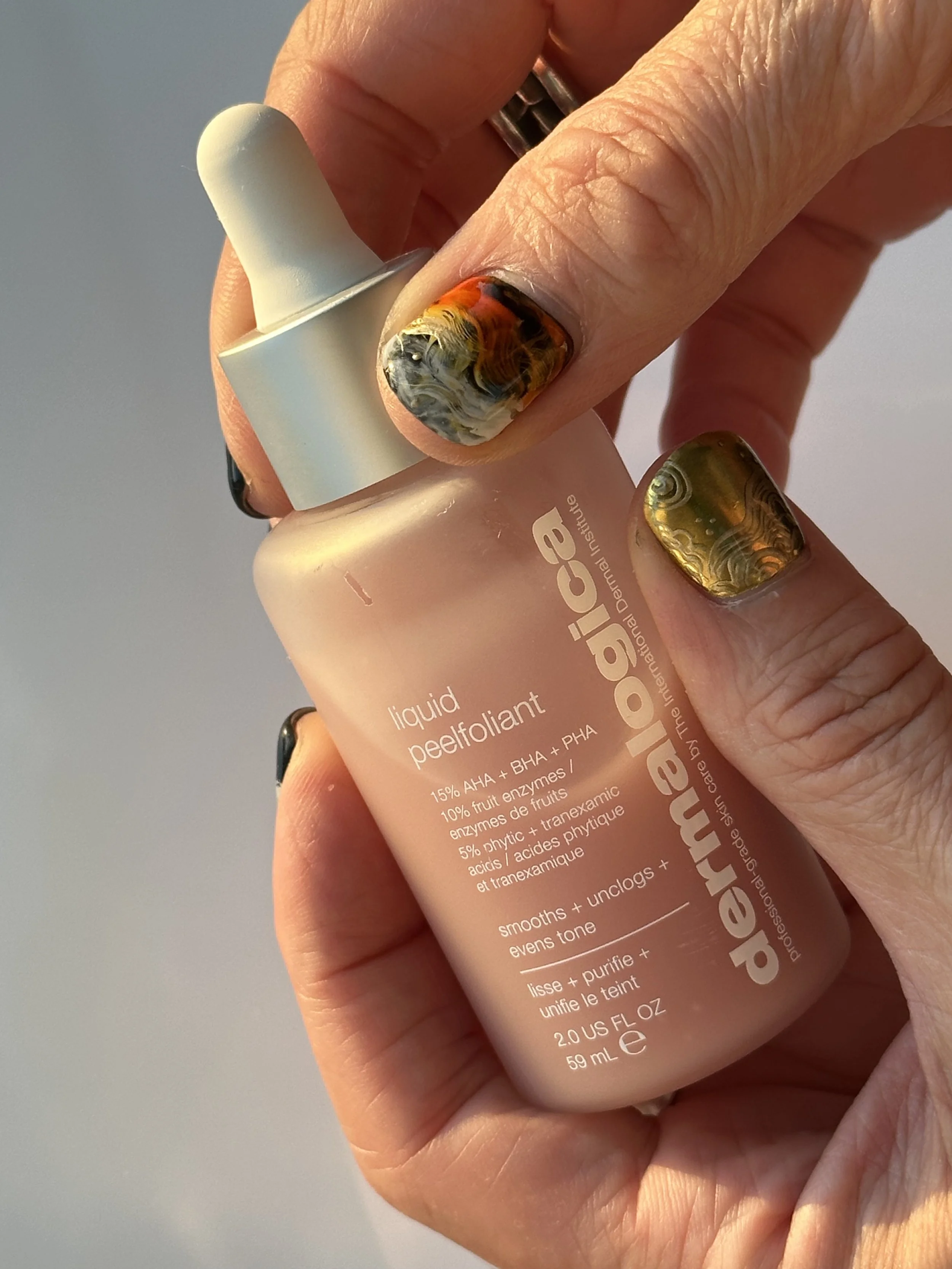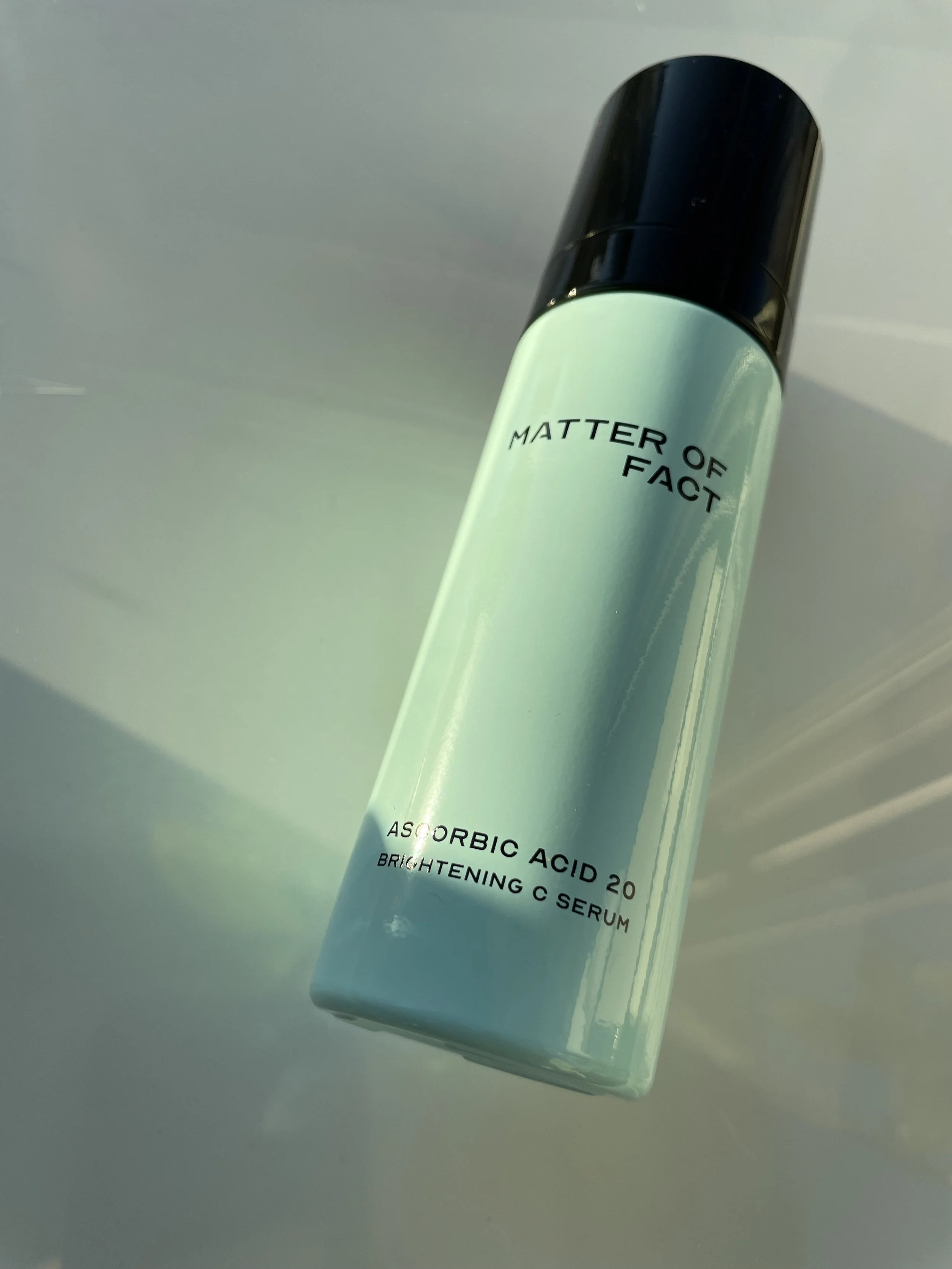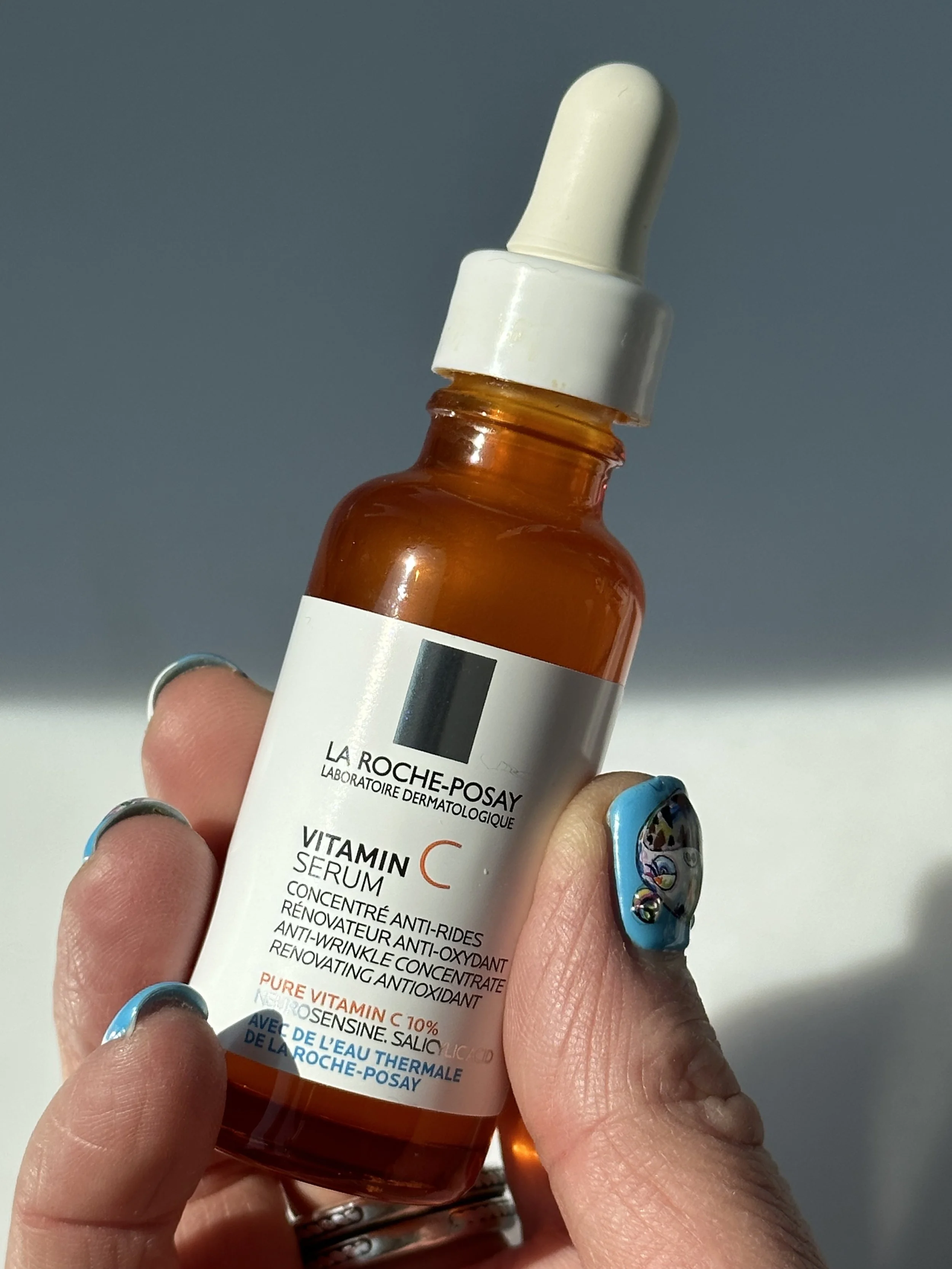PRODUCT REVIEW: PAULA'S CHOICE 25% VITAMIN C + GLUTATHIONE CLINICAL SERUM - What percentage of vitamin c is effective? Should I use 10% or 20% vitamin C? Is higher percentage of vitamin C better?
PAULA'S CHOICE 25% VITAMIN C + GLUTATHIONE CLINICAL SERUM
For me, not a day (or skincare routine) goes by that doesn’t include a Vitamin C face serum. Could there be any less sexy ingredient than Vitamin C – yet one that’s more beneficial to your skin?
It wasn’t that long ago that potent, well-formulated Vitamin C serums didn’t exist. The few that were available weren’t very pleasurable. Even the best Vitamin C serums today can have a really unpleasant odor resulting from the high concentration of Ascorbic Acid in the formula. If you’re a fan of 15% Vitamin C serums, you know exactly what I mean.
I can think of any number of high-potency Vitamin C serums with Ascorbic Acid that have that weird, pungent odor. Among them are Drunk Elephant’s C-Firma Fresh Day Serum the Paula’s Choice C15 Super Booster and even the iconic $182 SkinCeuticals C E Ferulic. They all stink – literally, not figuratively!
But the experts at Paula's Choice found a way to balance exceptional efficacy with an exceptional experience. The new Paula's Choice 25% Vitamin C + Glutathione Clinical Serum is one of the most pleasurable Vitamin C serums with a super-high concentration of Vitamin C – and more. Read about my experience with it over the last several weeks in my product review down below.
THE BEST
PAULA’S CHOICE PRODUCTS
While Vitamin C has been around since the dawn of time, it’s indepensible for your skin health – not to mention your health in general. In fact, Vitamin C is as essential to your survival as food and water.
Did you know that the human body can’t survive for long without it? And in one of the great ironies of nature, the body can neither produce Vitamin C on its own nor store the vital substance for longer than a day. In much the same way that your body needs consistent replenishment of food and water, it needs Vitamin C to survive and thrive.
Basically, you need it every day. Because Vitamin C is water-soluble, it cannot be stored in the body for later use; any excess is excreted through urine as waste. That’s why it is so important to regularly take in Vitamin C through the consumption of fruits and vegetables – or through alternative sources like a daily supplement.
What does Vitamin C do in the body? Well, its role cannot be underestimated. Vitamin C supports numerous bodily functions that are directly linked to your health – including collagen synthesis, immune defense and antioxidant protection. (Can you see the direct links to your skin health?)
How long can you survive without vitamin C?
The body requires vitamin C for a range of essential functions and cannot produce it on its own; it must be obtained through dietary sources. Vitamin C deficiency can lead to scurvy, a condition characterized by fatigue, weakness, gum disease and skin abnormalities. According to a study published in the Journal of Clinical Pathology, the typical duration of survival without any vitamin C ranges from 4 to 12 weeks.
Source: Journal of Clinical Pathology
CATCH THE BREAKTHROUGH VITAMIN C SERUM IN ACTION!
As I alluded to at the outset, I use a Vitamin C face serum twice daily. It forms an essential element at the core of my routine – what I refer to as the Skincarma ABC method. “ABC” comprises three serums or treatments: a Retinol face cream (Vitamin A), a Niacinamide serum (Vitamin B3) and a Vitamin C serum.
In the morning, application of a 10% Vitamin C serum or higher delivers effective antioxidant protection from the environmental damage that contributes to skin aging over time. In addition to a facial sunscreen to prevent sun damage and resultant photoaging, I consider a potent antioxidant serum with Vitamin C essential. I never skip it!
One of my all-time favorites is the Drunk Elephant C-Firma Fresh Day Serum. Freshly activated, it’s a super lightweight and watery face serum, making it easily layered into your skincare routine before or after other serums. You can catch my review of it on the blog here.
I’m also a big fan of the classic Paula’s Choice C15 Super Booster which I’ve reviewed on the blog. With 15% pure Vitamin C in the form of Ascorbic Acid, as well as Ferulic Acid, Sodium Hyaluronate, and multiple skin-replenishing actives, it’s also very easily layered.
Explore reviews of my favorite Vitamin C face serums on the blog here.
THE BEST VITAMIN C SERUMS & CREAMS
Before I get into my detailed Paula's Choice 25% Vitamin C + Glutathione Clinical Serum product review just below, I wanted to explore some of the most frequently asked questions about Vitamin C and other distinguishing actives specific to the formula…
1. What percentage of vitamin c is effective?
The percentage of Vitamin C that is effective for skin depends on several factors specific to your skin and the precise needs of your skin. Among these are skin sensitivity, its tolerance for strong actives, and your individual skin concerns.
While there is no exact percentage of Vitamin C that is universally considered effective, concentrations ranging from 10% to 20% can deliver the broadest range of benefits for your skin.
According to a study published in the Journal of Clinical and Aesthetic Dermatology, Vitamin C concentrations of 10% to 20% can help stimulate collagen production, fade the appearance of dark spots and other forms of hyperpigmentation – as well as brighten the complexion and protect your skin from free radical damage.
Even a Vitamin C serum with a lower concentration of 2-5% can deliver benefits for your skin, including brightening and antioxidant protection against environmental damage.
Explore my picks of the best Vitamin C face serums on the blog here.
Sources: Journal of Clinical and Aesthetic Dermatology - Topical Vitamin C and the Skin: Mechanisms of Action and Clinical Applications; NIH, National Library of Medicine, Office of Dietary Supplements - Vitamin C Fact Sheet for Health Professionals
2. Should I use 10% or 20% vitamin C serum?
Deciding between a 10% Vitamin C serum and an even stronger face serum with 20% Vitamin C really comes down to product preference and formula quality.
When it comes to high concentrations of Vitamin C, it’s important to consider factors like your skin concerns, your skin’s sensitivity and any potential for irritation. When used in a well-formulated serum or cream, both concentrations are effective at delivering the best Vitamin C has to offer your skin – and your longterm skin health.
A 10% concentration of Vitamin C is widely considered a solid starting point, especially for people with a tolerance for high-potency actives. It can provide visible and often immediate benefits, including brightening the complexion and reducing the appearance of dark spots and other forms of hyperpigmentation. That’s in addition to Vitamin C’s exceptional ability to prevent environmental damage. A 10% concentration is generally well-tolerated and, when used consistently, helps to stimulate collagen production in healthy skin.
(A 5% Vitamin C serum is a better option for sensitive skins or for those just starting out. Consider the Naturium Vitamin C Complex Serum, which I review on the blog here.)
A 20% concentration of Vitamin C may be more suitable for advanced skincare users who have built up their skin’s tolerance for stronger actives. It can deliver all the benefits of a 10% Vitamin C serum, including promoting collagen production, which plumps skin and helps minimize the appearance of surface fine lines and wrinkles.
Explore my picks of the best Vitamin C face serums on the blog here.
Sources: NIH, National Library of Medicine, PubMed - Vitamin C in dermatology; Vogue - How to Build Vitamin C Into Your Skin-Care Regimen
3. Is higher percentage of vitamin C better?
Generally speaking, a higher concentration of Vitamin C between 10% and 20% is considered ideal in order to benefit from everything Vitamin C has to offer. As with any strong active, it is recommended to start with a lower level and build up your skin’s tolerance for the ingredient.
The most important things to consider when deciding which Vitamin C serum is best for you include your individual skin concerns and your level of sensitivity or tolerance for high-potency actives like Retinol, Glycolic Acid and Ascorbic Acid, the pure form of Vitamin C.
If you are concerned about a loss of collagen, more visible dark spots and other forms of intense hyperpigmentation, a 10% Vitamin C serum or higher applied twice daily may be ideal for you. With 15% Vitamin C in the form of Ascorbic Acid, Drunk Elephant’s C-Firma Fresh Day Serum and the Paula’s Choice C15 Super Booster are both excellent options.
If you have no real concern for dark spots, or are new to Vitamin C, start with a Vitamin C serum with a lower concentration or one which is formulated with a Vitamin C derivative like Sodium Ascorbyl Phosphate. I like both the Naturium Vitamin C Complex Serum and Bubble Day Dream Vitamin C + Niacinamide Tone and Texture Serum.
Explore my picks of the best Vitamin C face serums on the blog here.
Sources: NIH, National Library of Medicine, PubMed - Vitamin C in dermatology; Vogue - How to Build Vitamin C Into Your Skin-Care Regimen
4. What does glutathione do to your skin?
Found naturally in the body, Glutathione is a powerful antioxidant that plays a crucial role in maintaining healthy skin. Unlike Vitamin C, Glutathione is naturally produced by the body and is involved in various cellular processes, including detoxification and protection against oxidative stress. As an antioxidant, Glutathione neutralizes free radicals, which are unstable molecules that can damage cells and contribute to skin aging and other skin concerns.
And similar to Vitamin C, one of the key benefits of Glutathione for the skin is its ability to both brighten the complexion and even out and unify your skin tone. How does Glutathione act on dark spots? Well, it has the ability to inhibit the production of melanin, the pigment responsible for dark spots and other forms of hyperpigmentation, resulting in a more radiant complexion.
Additionally, Glutathione can help reduce the appearance of fine lines and wrinkles by protecting the skin from the skin-aging effects of UV radiation and other environmental stressors.
Explore my picks of the best Vitamin C face serums on the blog here.
Sources: Core Med Science - Glutathione: 14 Benefits of the Master Antioxidant Supplement; NIH, National Library of Medicine, PubMed - Glutathione and its antiaging and antimelanogenic effects
5. Product Review
Paula's Choice 25% Vitamin C + Glutathione Clinical Serum Review
To start, I have to express just how much I enjoy the new Paula's Choice 25% Vitamin C + Glutathione Clinical Serum. It surprises me because I have rarely enjoyed using a potent Vitamin C serum this much. And there are very few antioxidant brightening serums on the market with a 25% concentration of Vitamin C or higher – let alone pleasurable ones.
As I’ve shared in the past, I have the popular Allies of Skin 35% Vitamin C Perfecting Serum in my skincare cabinet and I very rarely use it. It begs the question, do you need a 35% Vitamin C serum to attain all the benefits of the potent active? The answer is no. And if it’s not a pleasurable experience, why bother? There’s no skincare joy in that!
One notable exception is the Revision Skincare C+ Correcting Complex 30%. With 30% Vitamin C in the form of Tetrahexyldecyl Ascorbate, the lightweight lotion is both dermatologist-prescribed and a pleasure to use. At $176, it’s a worthy rival for the $182 SkinCeuticals C E Ferulic, the iconic Vitamin C serum and one of the first to market nearly 20 years ago.
Similarly, the Paula's Choice 25% Vitamin C + Glutathione Clinical Serum is powered by Tetrahexyldecyl Ascorbate (THDA). What is Tetrahexyldecyl Ascorbate and how is Tetrahexyldecyl Ascorbate better than other forms of Vitamin C?
According to the experts on the Paula’s Choice research team, THDA is a stable and oil-soluble Vitamin C molecule that is less irritating for the skin than Ascorbic Acid, the purest form of Vitamin C.
Potent L-Ascorbic Acid is highly acidic and its very low pH can more easily lead to skin irritation and sensitivity. On the other hand, THDA doesn’t require a low formula pH, making it much gentler on the skin – and better tolerated by most skins. The best Vitamin C serums for sensitive skin are, in fact, formulated with Tetrahexyldecyl Ascorbate.
Compared to Ascorbic Acid, Tetrahexyldecyl Ascorbate is less prone to degradation when exposed to light, air or heat – and thus retains superior potency for longer. In fact, a recent article in The New York Times titled, Does Vitamin C Actually Help Your Skin? explores the question of whether a Vitamin C serum with Ascorbic Acid remains stable long enough to benefit the skin.
From the article: “Vitamin C is an unstable molecule and it can easily break down into a different molecule that doesn’t help the skin, said Dr. Whitney Bowe, a dermatologist in New York City. For example, L-ascorbic acid, a form of vitamin C found in many skin care products, degrades when it is exposed to heat, a high pH or sunlight, she said — which can happen during transit and storage.”
And then there’s the question of sufficient penetration into the skin barrier to allow Vitamin C to do what it needs to do to truly promote your skin health.
The article continues, “Even if the vitamin C in a product remains stable, it may not penetrate the skin deeply enough to benefit it. The skin’s outermost layer repels water-loving molecules like L-ascorbic acid — and that means that the molecule may not get sufficiently absorbed, Dr. Bowe said.”
The enhanced stability of THDA allows it to retain its potency and effectiveness for a longer period of time. But because it is an oil-soluble lipid, THDA penetrates deeper into the skin barrier than Ascorbic Acid, enhancing its efficacy even further.
While the high concentration of Tetrahexyldecyl Ascorbate in the Paula's Choice 25% Vitamin C + Glutathione Serum is exceptional, it’s not the only feature that makes the new formula innovative. The true innovation derives from the inclusion of both Glutathione and “Glutathione amino acid precursors” – which the brand refers to as GAP technology.
These combine to “minimize irritation while amping up antioxidant protection and ingredient stability.” That’s how you get to a 25% Vitamin C concentration without risk of irritation.
I’ve made the Paula's Choice 25% Vitamin C + Glutathione Clinical Serum my go-to Vitamin C serum for the better part of a month now and have loved the entire experience. The product has a lightweight, silky lotion texture that melts into the skin. Generally, I use it in the penultimate step of my daily skincare routine, just before a moisture or daily sunscreen.
However, with its cocktail of more than a dozen water-binding humectants and emollients, the formula makes the ideal brightening moisturizer for oily skin year-round – and all skins on a hot summer day. And, the slew of antioxidants beyond just the Vitamin C makes it one of the best antioxidant serums for defense against environmental skin-aging.
One additional note. I don’t mean to imply that the level of THDA in the Paula's Choice 25% Vitamin C + Glutathione Clinical Serum comprises the entire 25% concentration of Vitamin C in the formula. While Tetrahexyldecyl Ascorbate is listed as the second ingredient in the INCI, there are two additional forms of the molecule, including Ascorbyl Glucoside at ingredient #6 and Ascorbic Acid – which may be at about a 1% concentration. The three combine to make up the entire 25% in the product, though the majority of that is quite clearly THDA.
In conclusion, the Paula's Choice 25% Vitamin C + Glutathione Clinical Serum is a superior Vitamin C serum than any other that I’ve tried in terms of efficacy, potency and pleasurability.
6. Pros & Cons
What I like about it: The Paula's Choice 25% Vitamin C + Glutathione Clinical Serum is one of the best Vitamin C serums with a very high concentration of Vitamin C. I love the silky texture that melts into skin. More importantly, the use of THDA allows for better penetration of the Vitamin C for enhanced efficacy. And because it’s better tolerated by the skin, the product is a better Vitamin C serum for sensitive skin than any other at this level.
What I don’t like about it: I love everything about it.
Who it’s for: All skin types, even very sensitive skin.
SHOP THE BLOG: Want to try it for yourself? Purchase the Paula's Choice 25% Vitamin C + Glutathione Clinical Serum for $62 here.
The Ingredient List of the Paula's Choice 25% Vitamin C + Glutathione Clinical Serum:
 aox|sb, Dimethicone (Silicone/Emollient) emo 0 1, Glycerin (Humectant)
aox|sb, Dimethicone (Silicone/Emollient) emo 0 1, Glycerin (Humectant)  sii|h 0 0, C9-12 Alkane (Solvent) solv, Ascorbyl Glucoside (Vitamin C/Antioxidant)
sii|h 0 0, C9-12 Alkane (Solvent) solv, Ascorbyl Glucoside (Vitamin C/Antioxidant)  aox|sb, Silica (Texture Enhancer) vc, Pyrus Malus (Apple) Fruit Extract (Plant Extracts/Antioxidant)
aox|sb, Silica (Texture Enhancer) vc, Pyrus Malus (Apple) Fruit Extract (Plant Extracts/Antioxidant)  h, Hydrogenated Lecithin (Emollient)
h, Hydrogenated Lecithin (Emollient)  emo|emu, Polyglyceryl-6 Polyricinoleate (Emulsifier/Suspending/Dispersing Agent) emu, Acrylates/C10-30 Alkyl Acrylate Crosspolymer (Texture Enhancer) vc, Xanthan Gum (Texture Enhancer) vc, Glutathione (Antioxidant), Ergothioneine (Antioxidant) aox, Oryza Sativa (Rice) Bran Extract (Plant Extracts/Antioxidant), Hydroxyethyl Acrylate/Sodium Acryloyldimethyl Taurate Copolymer (Suspending/Dispersing Agent) vc, Cetyl Alcohol (Emollient) emo|vc 2 2, Caprylyl Glycol (Humectant) h|emo, Lysine Carboxymethyl Cysteinate (Antioxidant), Coco-Caprylate/Caprate (Emollient) emo, Tocopherol (Vitamin E/Antioxidant)
emo|emu, Polyglyceryl-6 Polyricinoleate (Emulsifier/Suspending/Dispersing Agent) emu, Acrylates/C10-30 Alkyl Acrylate Crosspolymer (Texture Enhancer) vc, Xanthan Gum (Texture Enhancer) vc, Glutathione (Antioxidant), Ergothioneine (Antioxidant) aox, Oryza Sativa (Rice) Bran Extract (Plant Extracts/Antioxidant), Hydroxyethyl Acrylate/Sodium Acryloyldimethyl Taurate Copolymer (Suspending/Dispersing Agent) vc, Cetyl Alcohol (Emollient) emo|vc 2 2, Caprylyl Glycol (Humectant) h|emo, Lysine Carboxymethyl Cysteinate (Antioxidant), Coco-Caprylate/Caprate (Emollient) emo, Tocopherol (Vitamin E/Antioxidant)  aox 0-3 0-3, Sodium Citrate (Ph Adjuster) chel|buff, Sodium Phytate (Chelating Agent) chel, Hexylene Glycol (Humectant) solv|emu|perf|surf 0-1 0-2, Ethylhexylglycerin (Humectant) pres, Helianthus Annuus (Sunflower) Extract (Plant Extracts/Antioxidant)
aox 0-3 0-3, Sodium Citrate (Ph Adjuster) chel|buff, Sodium Phytate (Chelating Agent) chel, Hexylene Glycol (Humectant) solv|emu|perf|surf 0-1 0-2, Ethylhexylglycerin (Humectant) pres, Helianthus Annuus (Sunflower) Extract (Plant Extracts/Antioxidant)  so|emo, Urea (Humectant)
so|emo, Urea (Humectant)  sii|h, Mannitol (Humectant)
sii|h, Mannitol (Humectant)  h, Caprylic/Capric Triglyceride (Emollient) emo, Sodium PCA (Humectant)
h, Caprylic/Capric Triglyceride (Emollient) emo, Sodium PCA (Humectant)  sii|h 0 0, Rosmarinus Officinalis (Rosemary) Leaf Extract (Plant Extracts/Antioxidant)
sii|h 0 0, Rosmarinus Officinalis (Rosemary) Leaf Extract (Plant Extracts/Antioxidant)  aox|so|amic, Polysorbate 60 (Emulsifier) emu|surf, Sorbitan Isostearate (Emulsifier) emu 0 1-2, Trehalose (Humectant)
aox|so|amic, Polysorbate 60 (Emulsifier) emu|surf, Sorbitan Isostearate (Emulsifier) emu 0 1-2, Trehalose (Humectant)  h, Ascorbic Acid (Vitamin C/Antioxidant)
h, Ascorbic Acid (Vitamin C/Antioxidant)  aox|sb|buff, Glucose (Humectant)
aox|sb|buff, Glucose (Humectant)  h, Vanilla Planifolia Fruit Extract (Plant Extracts/Antioxidant), Polyquaternium-51 (Film-Forming Agent) h, Triacetin (Solvent) amic|solv 0 0, Sodium Hyaluronate (Humectant)
h, Vanilla Planifolia Fruit Extract (Plant Extracts/Antioxidant), Polyquaternium-51 (Film-Forming Agent) h, Triacetin (Solvent) amic|solv 0 0, Sodium Hyaluronate (Humectant)  sii|h 0 0, Phenoxyethanol (Preservative) pres
sii|h 0 0, Phenoxyethanol (Preservative) presTHIS PAULA’S CHOICE SUNSCREEN IS EVERYTHING!
IS IT REALLY A SCAM?
Find out on my TikTok channel.
MY TOP VITAMIN C PICKS: VITAMIN C SERUMS I’M CRUSHING ON FROM ALGENIST, NATURIUM AND MORE
WATCH MY VIDEO REVIEW
THE BEST NIACINAMIDE SERUMS FOR CLOGGED PORES AND A BRIGHTER COMPLEXION
ON MY YOUTUBE CHANNEL HERE
WATCH MY VIDEO REVIEW OF
SKINCARE HACKS: GLYCOLIC ACID IS THE NATURAL DEODORANT THAT WORKS!
ON MY YOUTUBE CHANNEL HERE
WATCH MY VIDEO REVIEW OF
MY FAVORITE HUMECTANT SERUMS FROM PAULA'S CHOICE, THE INKEY LIST, GHOST DEMOCRACY AND MORE
ON MY YOUTUBE CHANNEL HERE
WATCH MY VIDEO REVIEW
COOL CLEAN FACIAL SUNSCREENS TO KEEP US SAFE AND SMILING IN THE SUN!
ON MY YOUTUBE CHANNEL HERE
WATCH MY VIDEO REVIEW
THE OPULUS BEAUTY LABS RETINOL SYSTEM – THE COOLEST RETINOL INNOVATION I’VE EVER SEEN
ON MY YOUTUBE CHANNEL HERE
WATCH MY VIDEO REVIEW
MY 2021 VITAMIN C PICKS + THE BEST VITAMIN C SERUMS TO BRIGHTEN UP THE COMPLEXION!
ON MY YOUTUBE CHANNEL HERE
WATCH MY VIDEO REVIEW OF
MY WINTER SKIN SAVIOR: SKINFIX BARRIER+ LIPID REPLENISHING SKINCARE
ON MY YOUTUBE CHANNEL HERE
WATCH MY VIDEO REVIEW
A COMPLETE K-BEAUTY ROUTINE WITH THE BEST FACIAL SKINCARE FROM PURITO, COSRX, MISSHA & MORE!
ON MY YOUTUBE CHANNEL HERE
WATCH MY VIDEO REVIEW
THE YEAR’S BEST VITAMIN C SERUMS WITH PAULA'S CHOICE, SUNDAY RILEY, THE INKEY LIST AND MORE!
ON MY YOUTUBE CHANNEL HERE
WATCH MY VIDEO REVIEW OF
A SELFCARE SUNDAY NOT FOR THE FAINT OF HEART – WITH THE PAULA’S CHOICE 25% AHA PEEL!
ON MY YOUTUBE CHANNEL HERE


